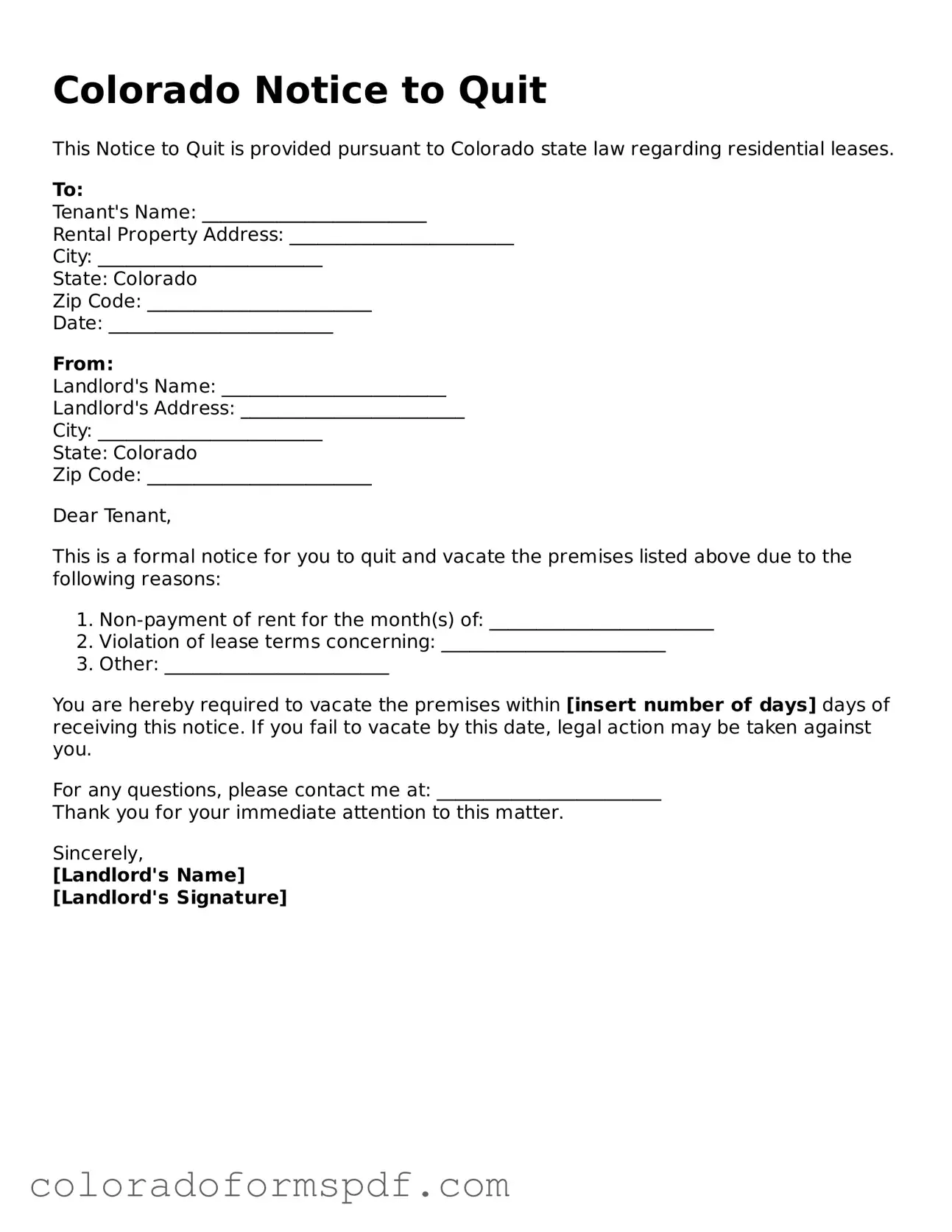The Colorado Notice to Quit form serves as a critical document in the landlord-tenant relationship, particularly when it comes to the process of terminating a lease agreement. This form is typically used by landlords to formally notify tenants that they must vacate the rental property, usually due to lease violations or failure to pay rent. In Colorado, the specifics of the Notice to Quit can vary depending on the circumstances; for example, a notice for non-payment of rent may have different requirements than one issued for other lease violations. The form must include essential information, such as the date of the notice, the reason for termination, and the timeframe in which the tenant must respond or vacate. Additionally, it is important for landlords to follow the correct procedures outlined by Colorado law to ensure the notice is valid and enforceable. Understanding the nuances of this form can help both landlords and tenants navigate the often complex process of lease termination while safeguarding their rights and responsibilities.
